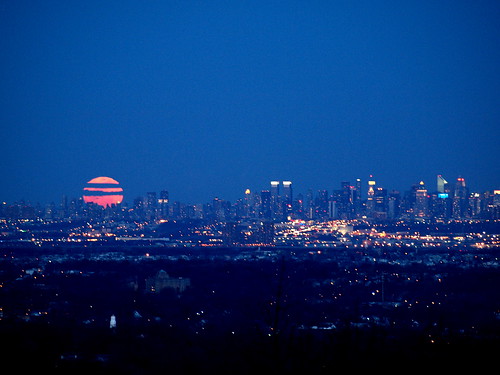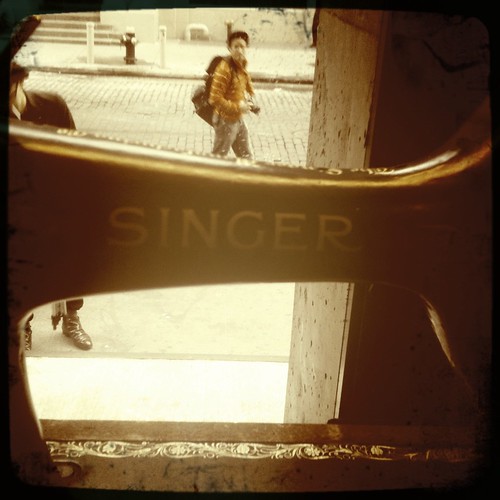THIRTY years ago, my family and I flew a TWA 747 from JFK to Rome. It was -- as far as I know -- my first time on a plane, and this was when flying, especially internationally, was still kind of an event. I do not remember as much about that trip as I would like to, but I do remember a few things very distinctly: tangling with a German woman in St. Peter's Square, drinking hot chocolate made the right way by the Graymore Sisters whose convent was our temporary home, and my cousins trying to see just how much I could eat before I would explode.
So, it was time to go back, and my dad had been offered the use of a house in La Marche, and of course we would need to go see the family. This time around we flew Swiss, and I learned that the Zurich airport is, in fact, not made entirely made out of Lego. So much for that fantasy.
 |
| Il Ducato |
|
There were five of us in the party, and my dad -- wanting to ensure there was room for us all -- went big with the rental vehicle, a Fiat Ducato. Ducato is apparently Italian for "too big." It was big by European standards... it was big by AMERICAN standards, and that's saying something considering we have the Hummer. The closest thing I've seen on these shores is a Sprinter delivery van. Dad, who drove a delivery truck for his family's grocery store, was undaunted by its size or the flaky gearshift, once we figured out how to get it into reverse! I snagged shotgun and operated multiple maps and GPS devices, and still managed to get us terribly lost several times.
After one night in Rome, we headed for the hills. La Marche, located on the Adriatic coast north and east of Rome, but not quite as far as Venice, is a lumpy blanket of hills and valleys, dotted with sunflower fields, olive groves and pristine lakes fed by mountain springs as they tumble down to the sea. Amandola, the town closest to our temporary home, is perched on a hilltop, with the old city at the very peak. Of course, due to my stellar navigation skills, we managed to steer the Ducato into a one-way street which got narrower and narrower like a scene from a Lewis Carroll story . At one point we had to stop and wait for some locals to come out of their houses and move their cars so we could squeeze through.
One of our number had booked her own accommodations in a beautiful bed-and-breakfast whose only downside is its location at the end of a long, remote track made of snow-white gravel. When we arrived at the address on the main road, a man came out to see what his dog was barking about, and -- after learning what we were looking for -- got in his car and beckoned us to follow him to the place rather than try to explain it. This became a recurring theme, and we were grateful that the local populace was so patient with befuddled tourists.
 |
| La Mela Rosa |
|
Once we found La Mela Rosa, our friend's B&B, we were told by the Australian proprietress that she'd made arrangements for all of us, including a British couple also staying with her, to have dinner on a working farm some distance away. We had been driving for hours and were tired and hungry, but we were also kind of at her mercy as we stood little chance of finding our own house in the dark, and she was willing to guide us there if we'd participate in this complicated arrangement of people and vehicles to get everybody to and from the restaurant. The Briton had -- after barely getting his little rental car up the steep hill to the B&B -- thrown his keys on the table and relied on his hostess to navigate the local roads.
We bumped and jostled our way along behind her to La Conca, the
agriturista where we'd be dining. What we didn't know was this was a once-a-year event, and the place was swarming with people, but a table was waiting for us.
In case we had forgotten, we quickly learned that there is no such thing as a quick meal in Italy. Each dish was presented in succession, with plenty of time to enjoy it before the next one followed. After almost two hours we begged for mercy and our guide returned to shepherd us along the dark country roads to the house where we'd be staying.
 |
| The view from our house |
The house is modern by rural European standards, made of stone with casement windows within and louvered shutters without, although the latter were made of sturdy plastic instead of wood. It is surrounded by farmland, and the dirt road twists through the fields and hills far beyond where Dad and I grew tired of walking and headed back. We never walked the way we drove in, as the neighbors have a pretty aggressive German Shepherd who chased the Ducato every day as we approached (but never as we left, oddly. What was he trying to say?).
We spent our days there exploring the villages and lakes around Amandola. We had some amazing fresh mozzarella in Sarnano, bought some local bread, cheese and fruit for a picnic on the shores of the
Lago di Fiastra and sampled the signature dish of Ascoli Piceno:
Olive all'ascolana - fried
olives stuffed with pork or beef, tomato paste, and Parmesan cheese.
 |
| Driving in Italy is fun! |
Ascoli Piceno is the largest city in the region, and an incident involving the Ducato is worth mentioning. Since it does not fit into a normal parking space, we asked a policeman for help and -- after trying to think how to explain to us where we could park -- he thought better of it, borrowed a scooter and gestured for us to follow him (sensing a theme yet?). We dutifully entered the parking garage he showed us, only to discover that there were sprinkler heads protruding from the ceiling which were lower than the peak of our little bus's rounded roof. With two of us directing from outside, dad maneuvered a complicated geometric dance to get into a space. After our tour, he performed an even more elaborate one (backwards) to get out again.without scraping the roof, let alone triggering some kind of aquatic calamity in the unstaffed garage.
One whole day was spent driving to San Marino, a tiny country-within-a-country that occupies the top of a mesa surrounded by flat plains. A steep, winding road leads you up into the fortified complex which is chock full of churches, museum, and (surprise) gift shops. In the spirit of the occasion I forked over 5 Euro to have my passport stamped, just to say I was there. On the way home, I managed to get us REALLY lost, and a local guy who we flagged down in a parking lot tried to explain how to get where we needed to go, sighed and then asked if it would be okay for him to buy his beer before leading us back to the highway. Sometimes pity is useful!




















